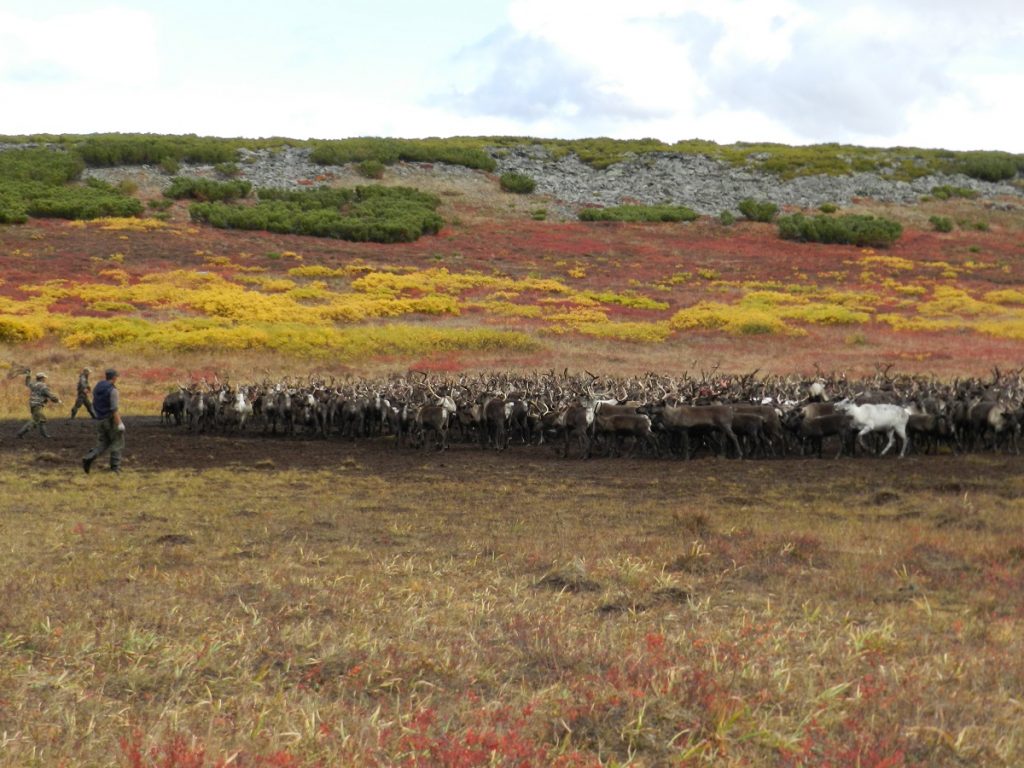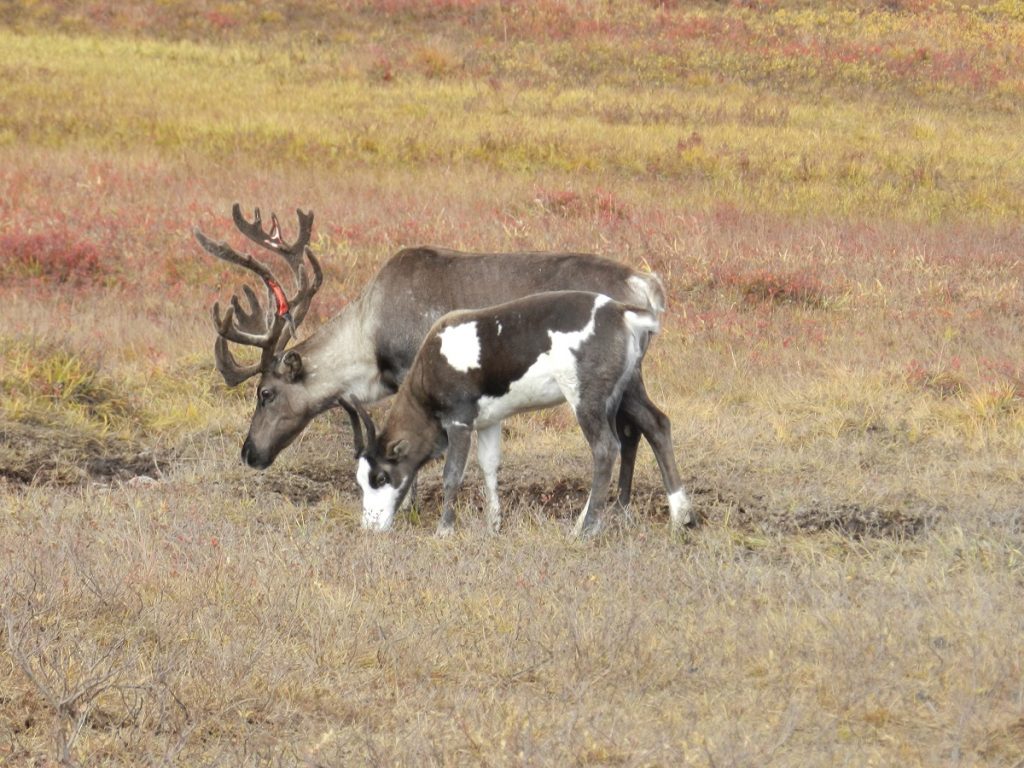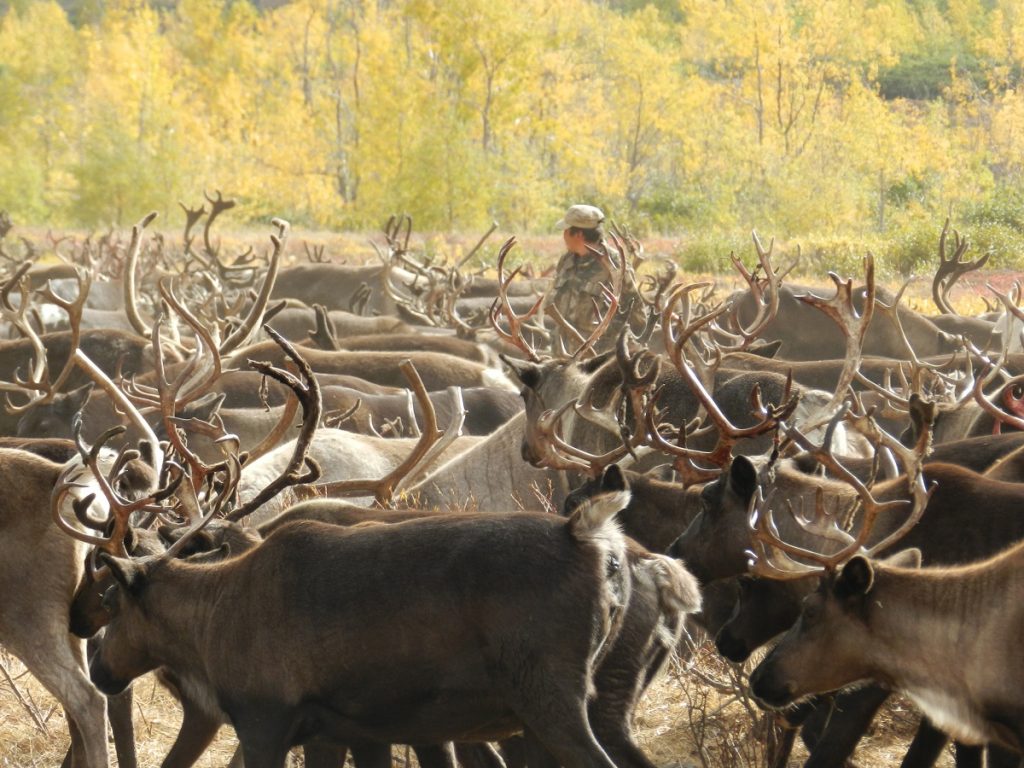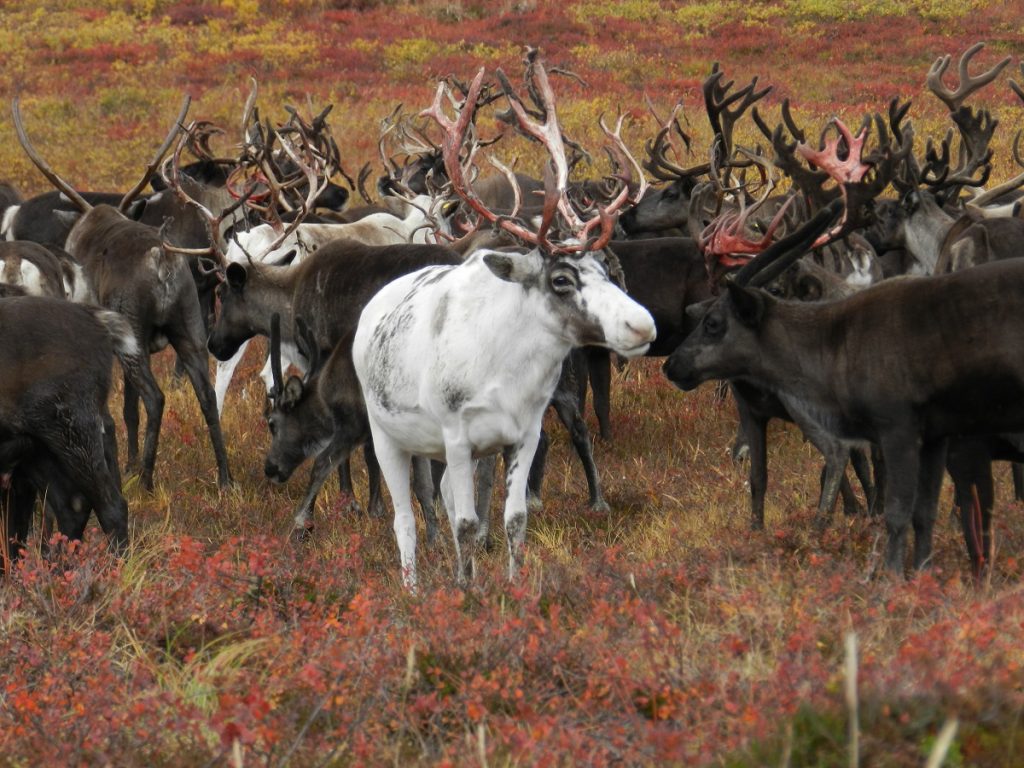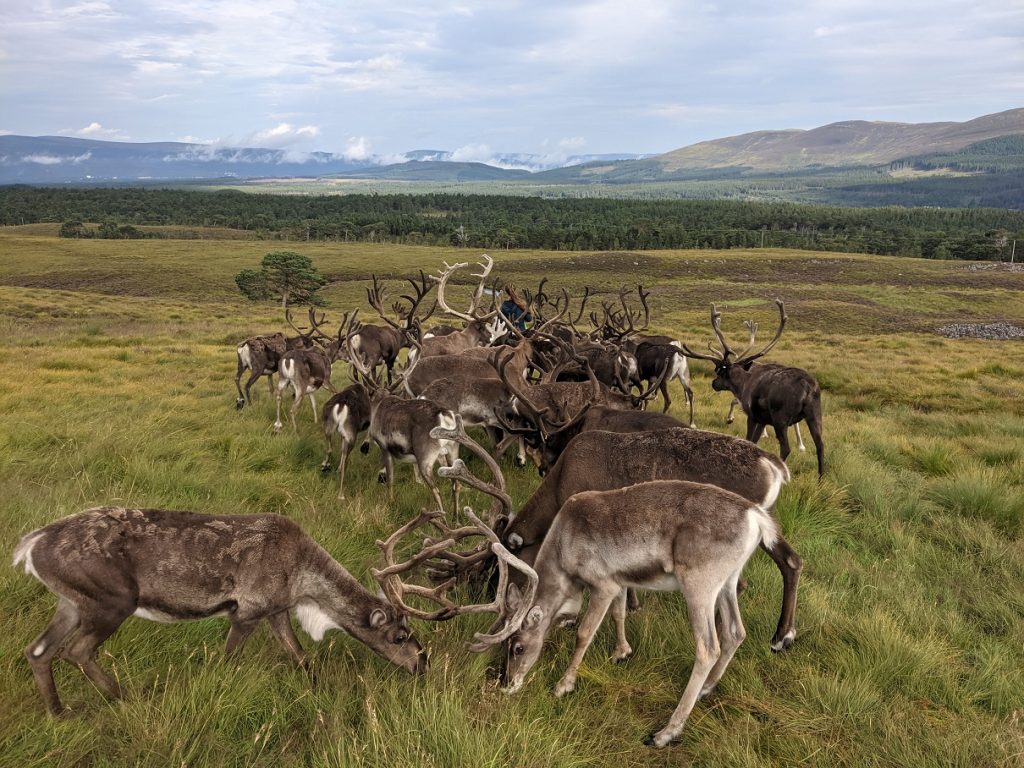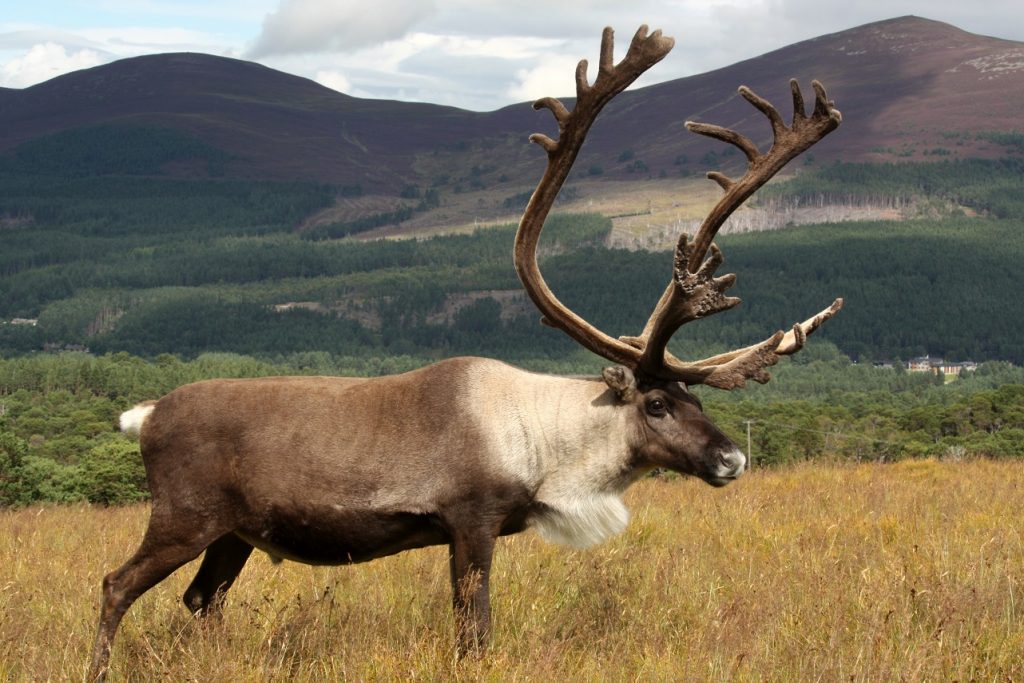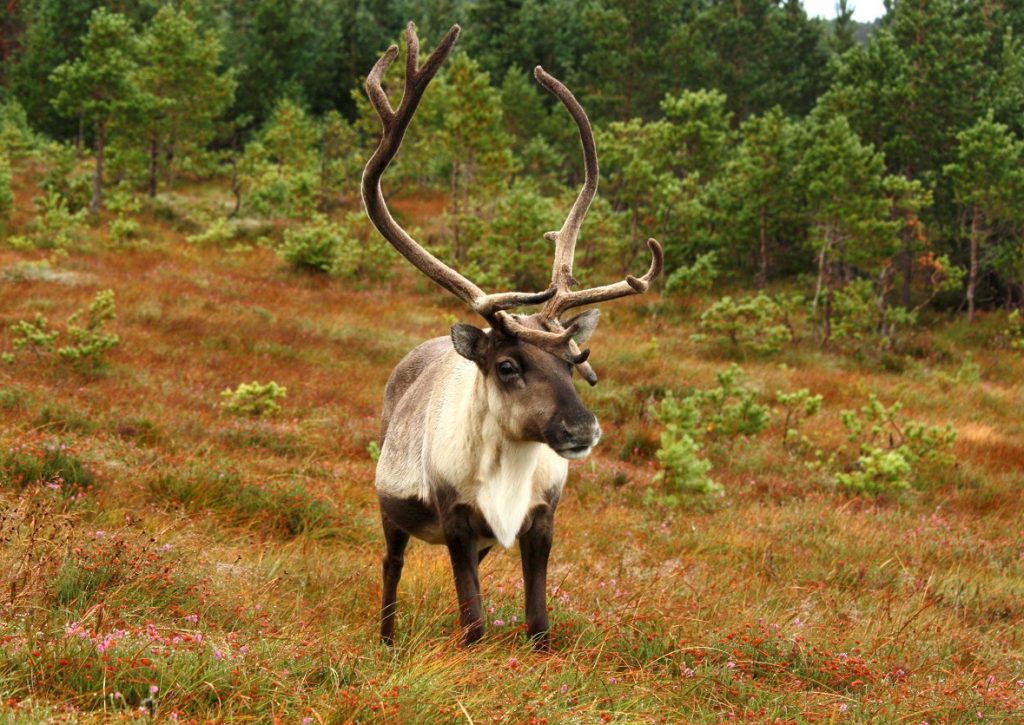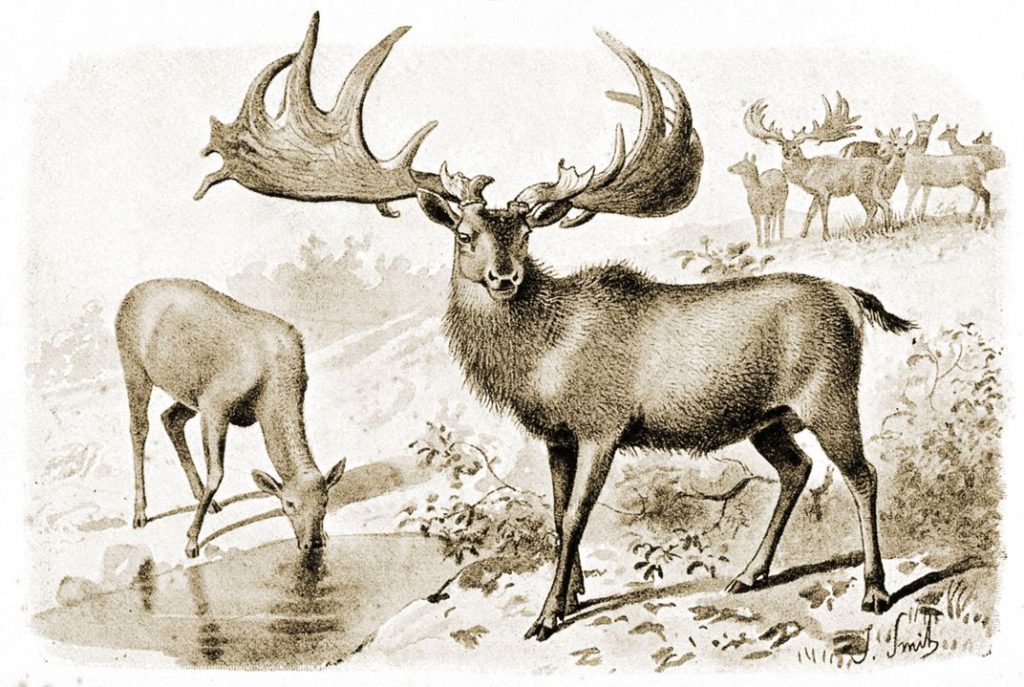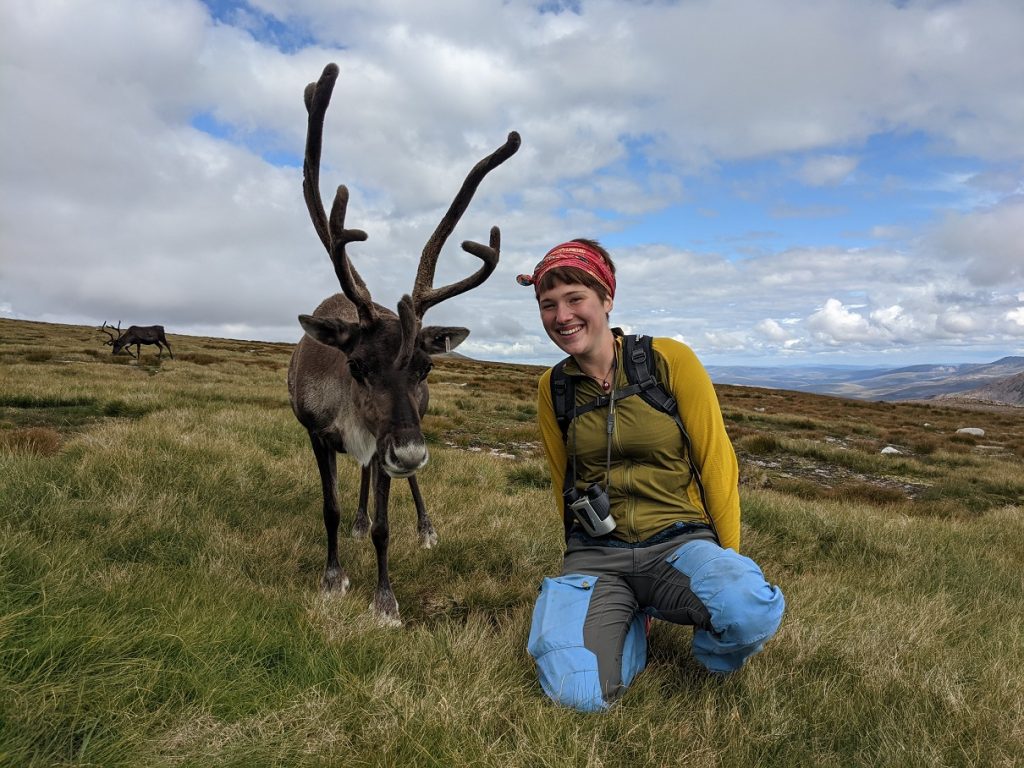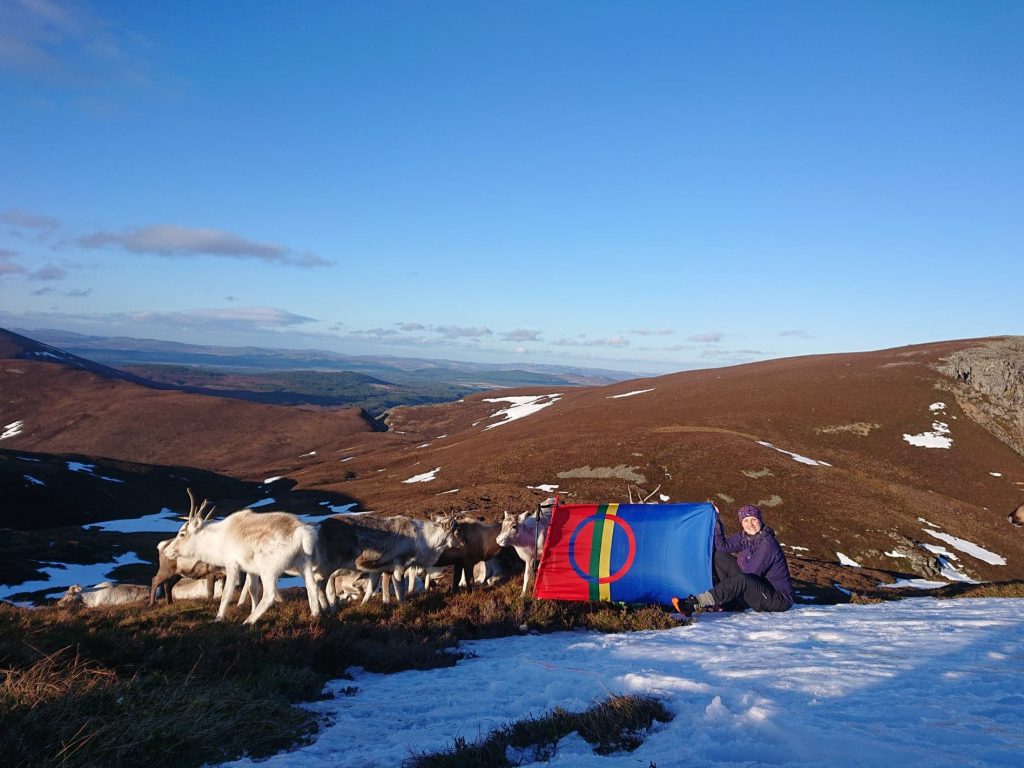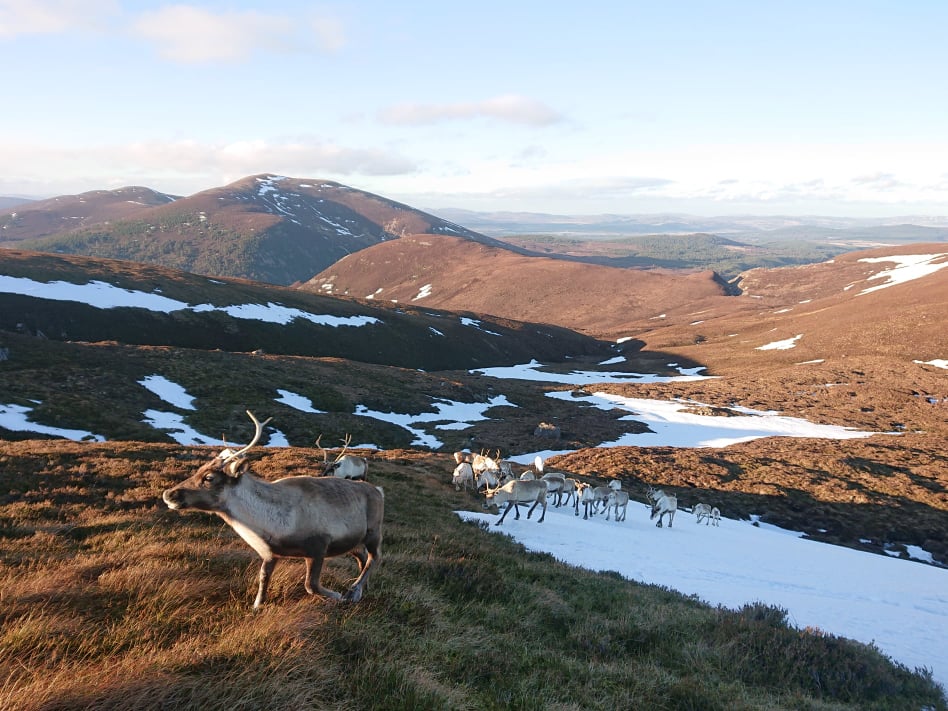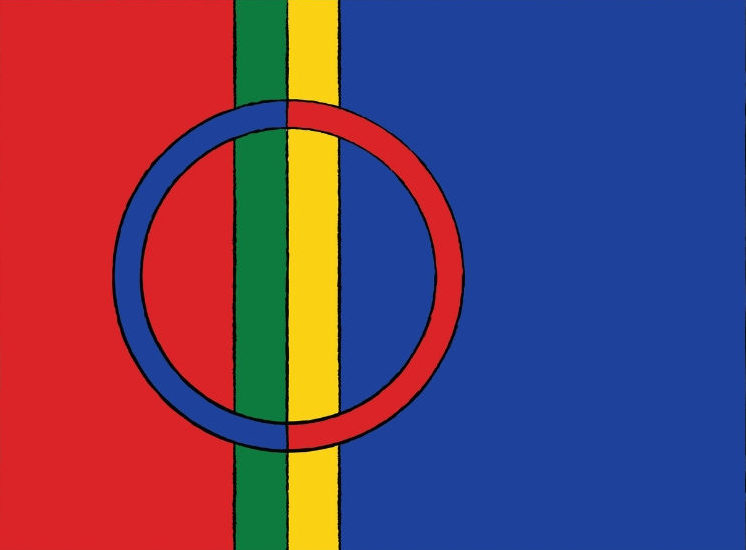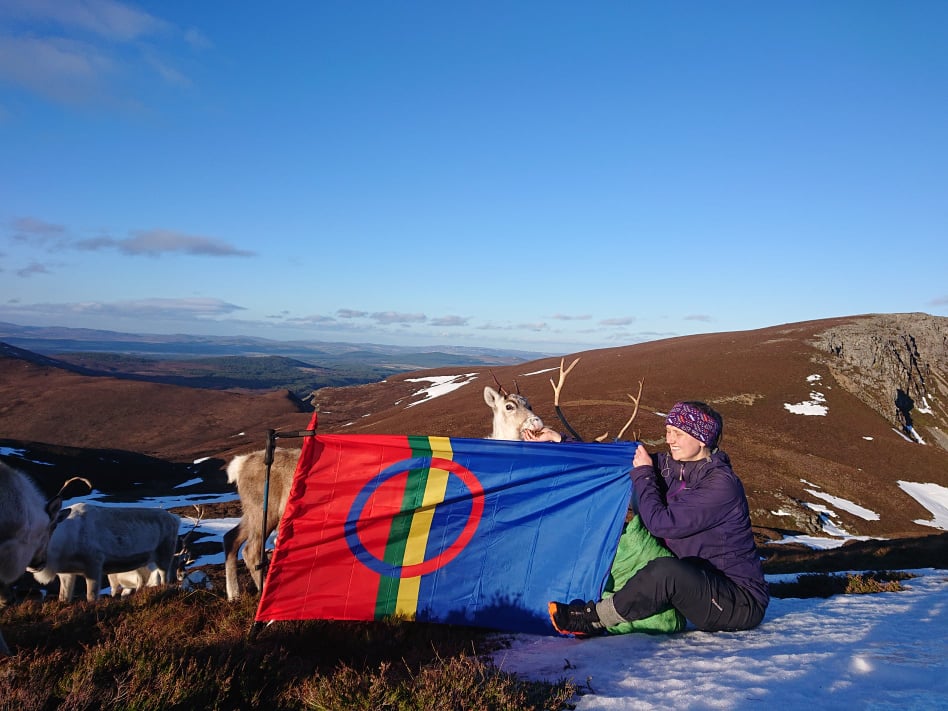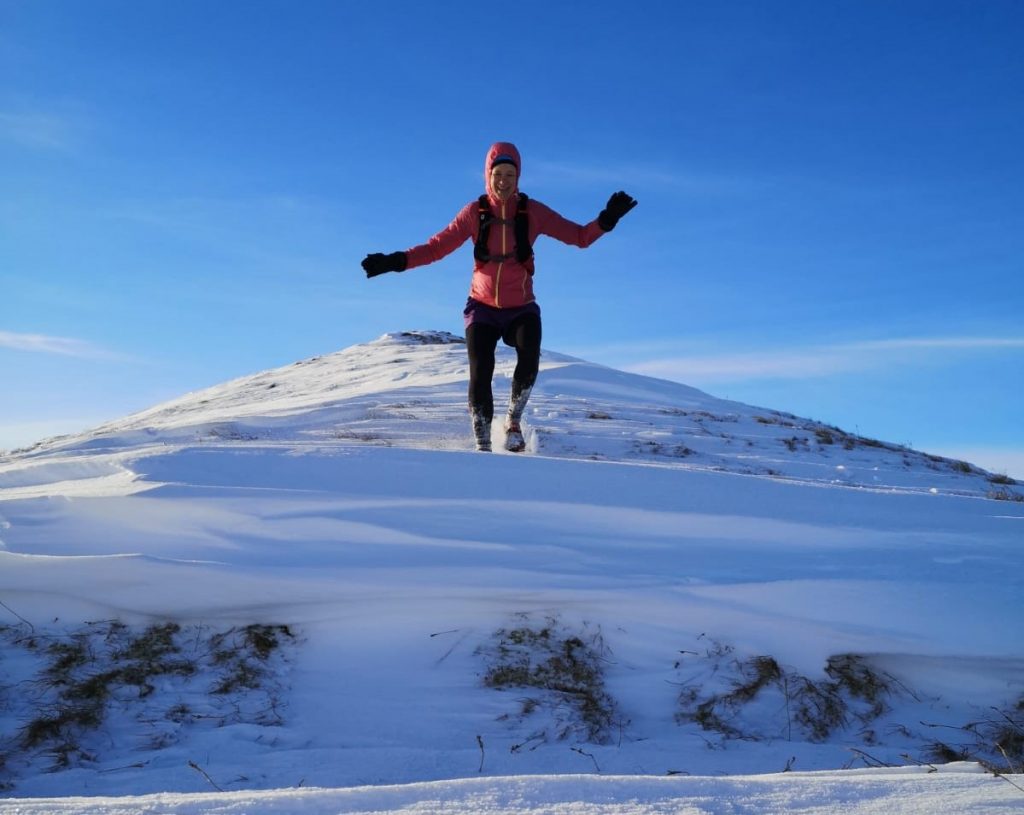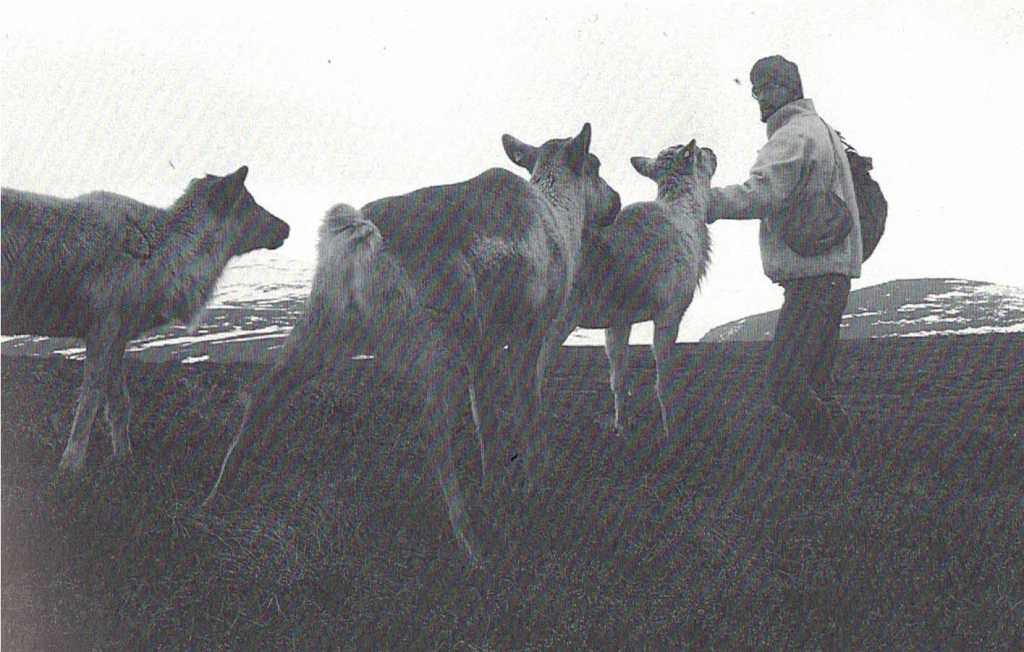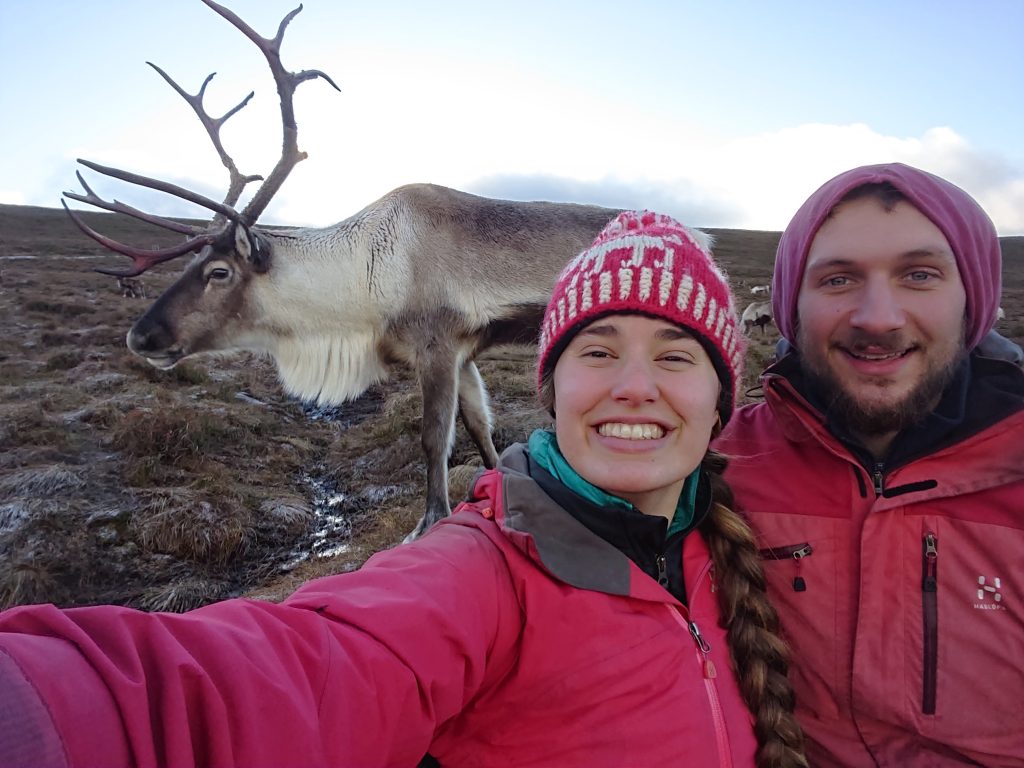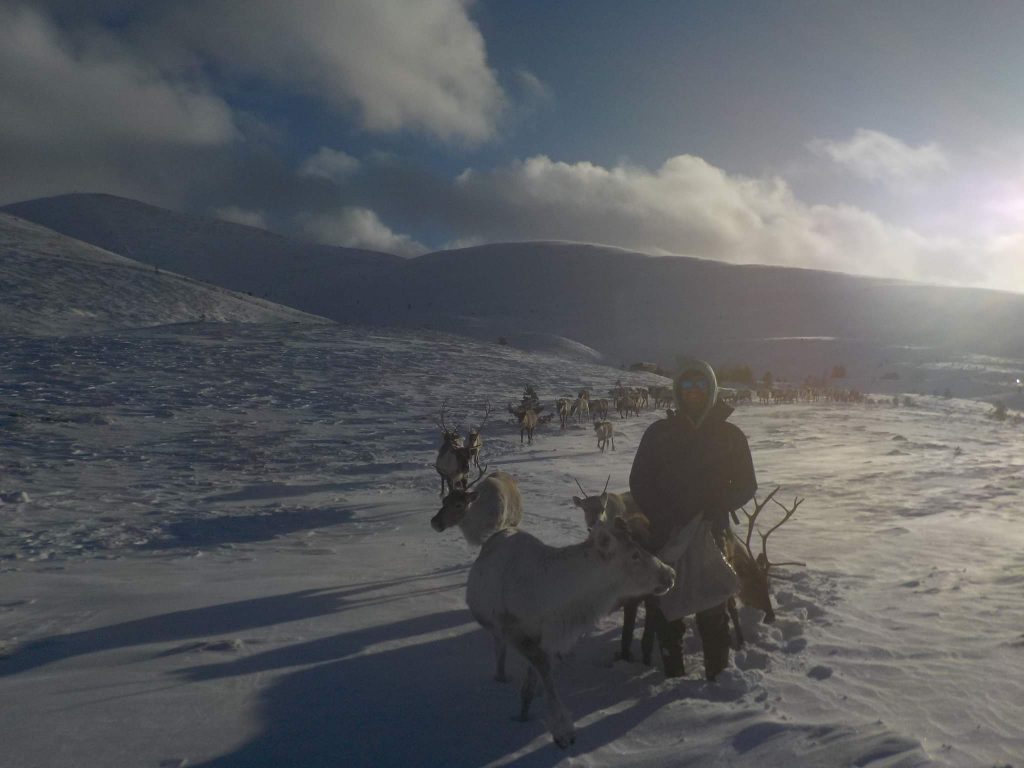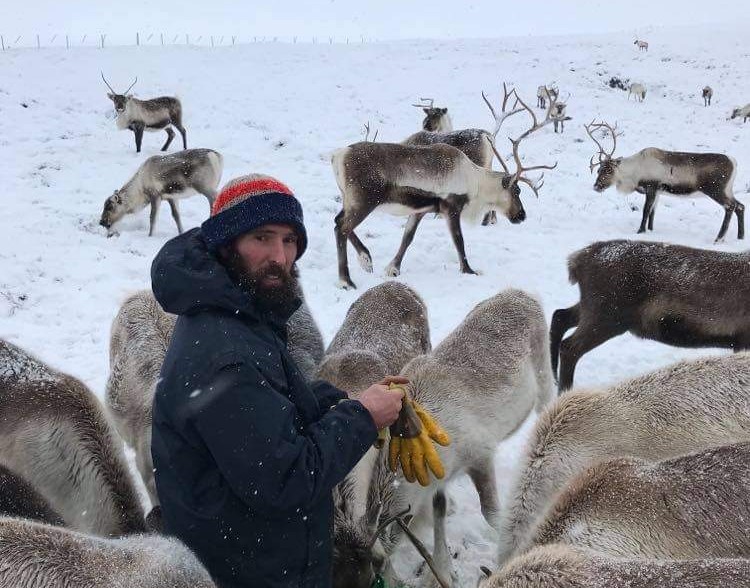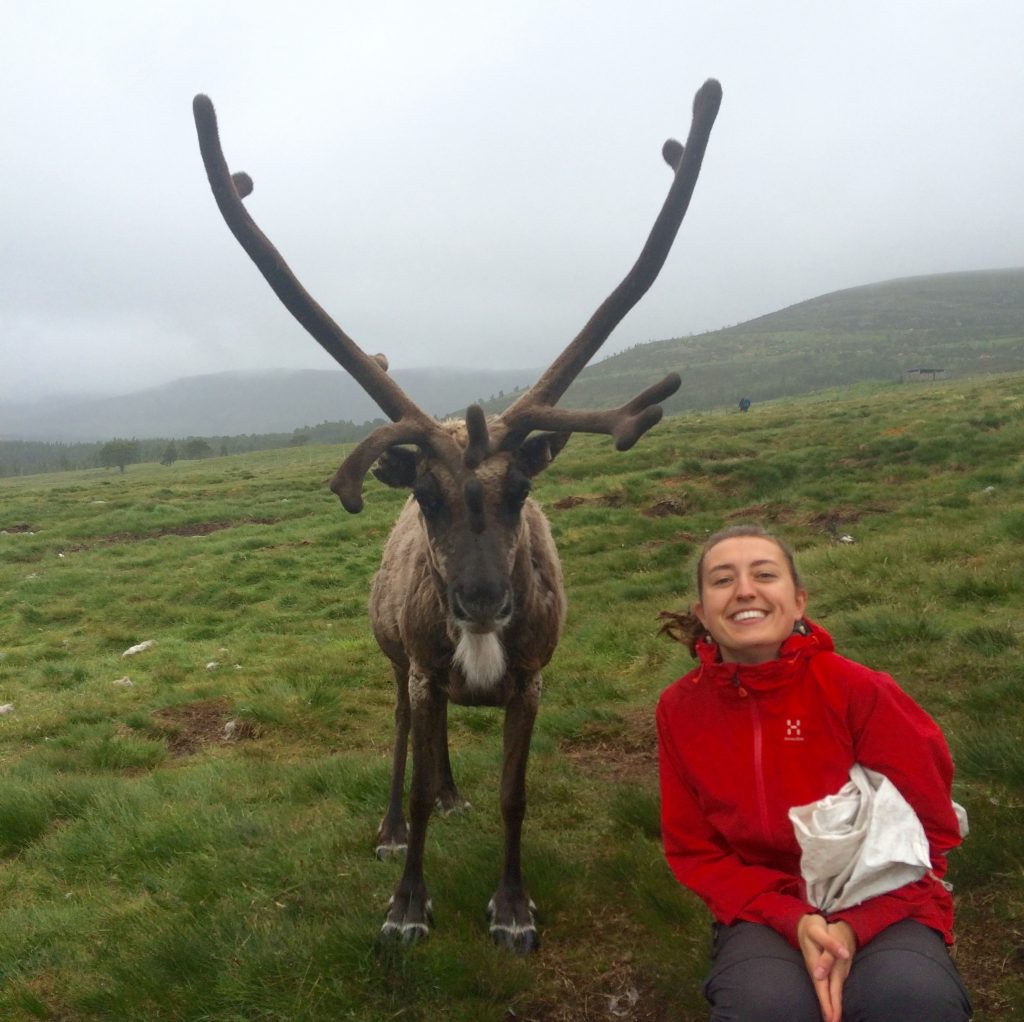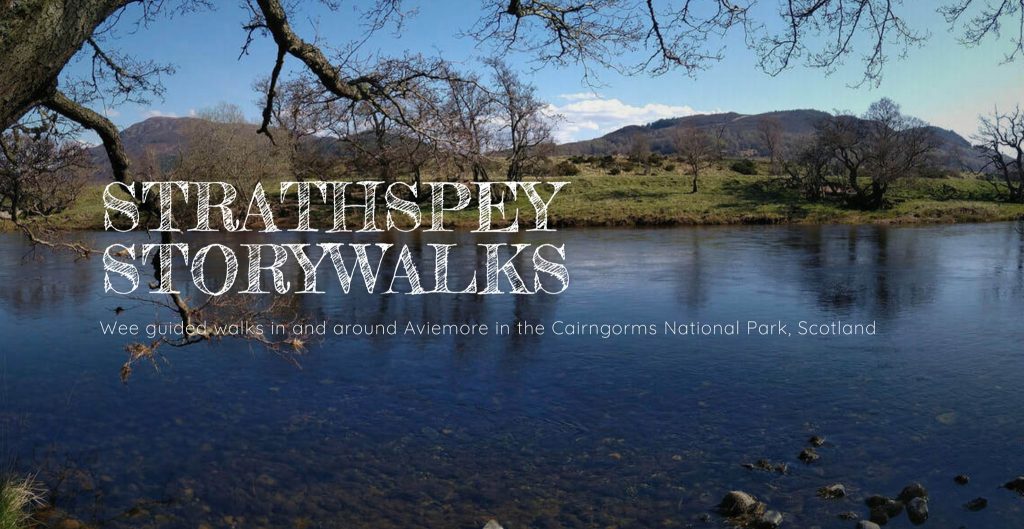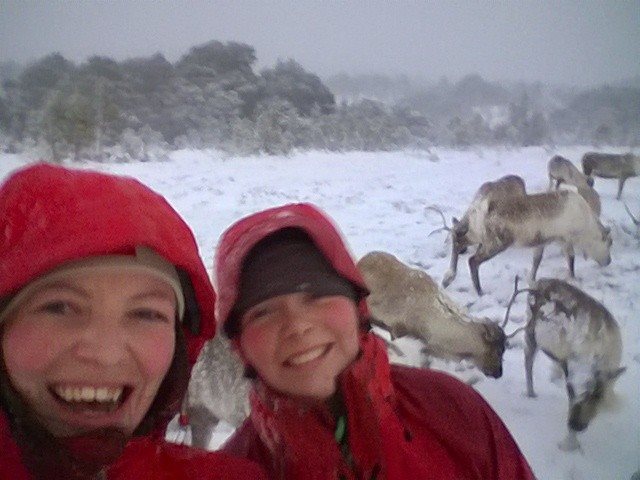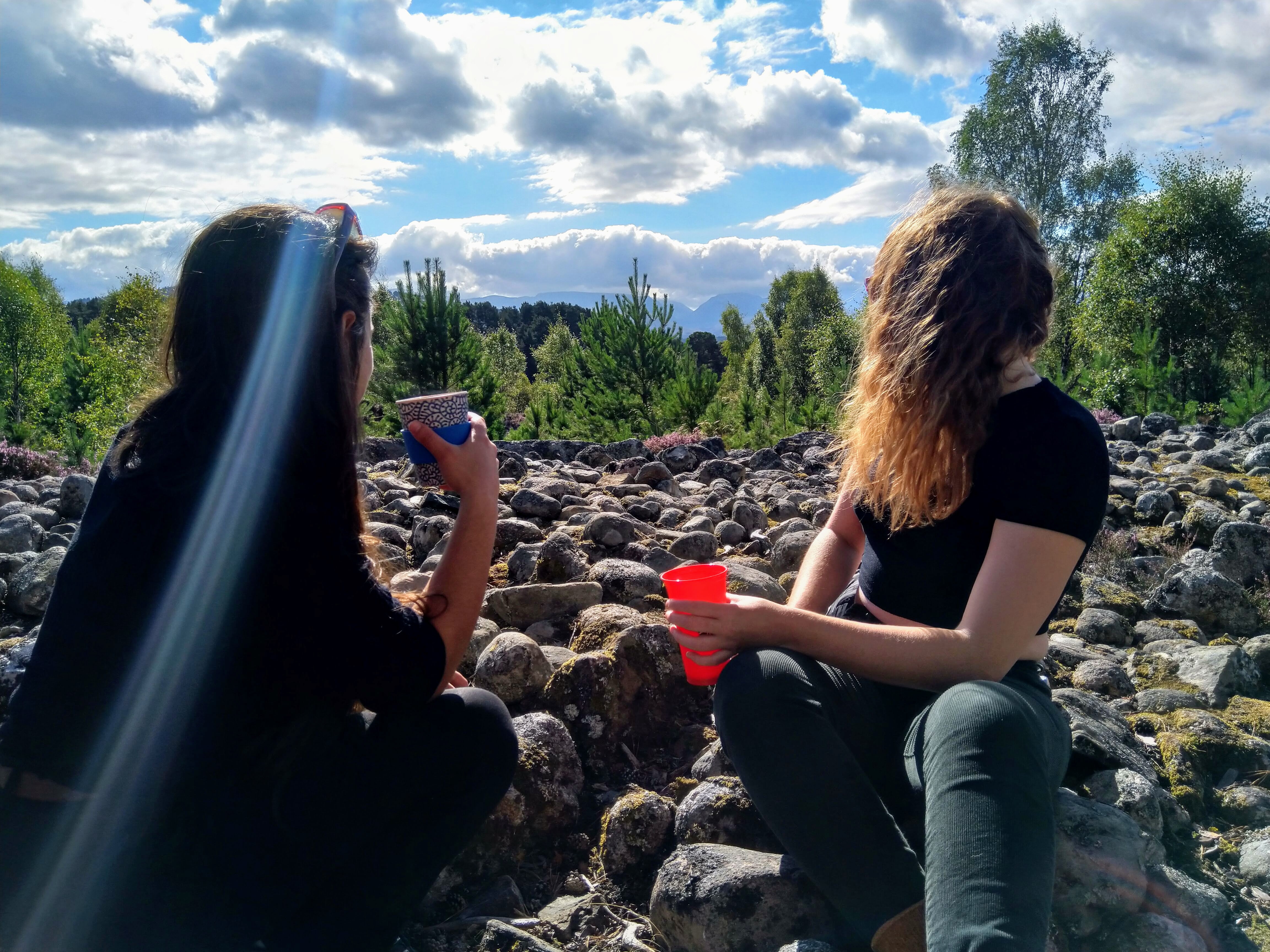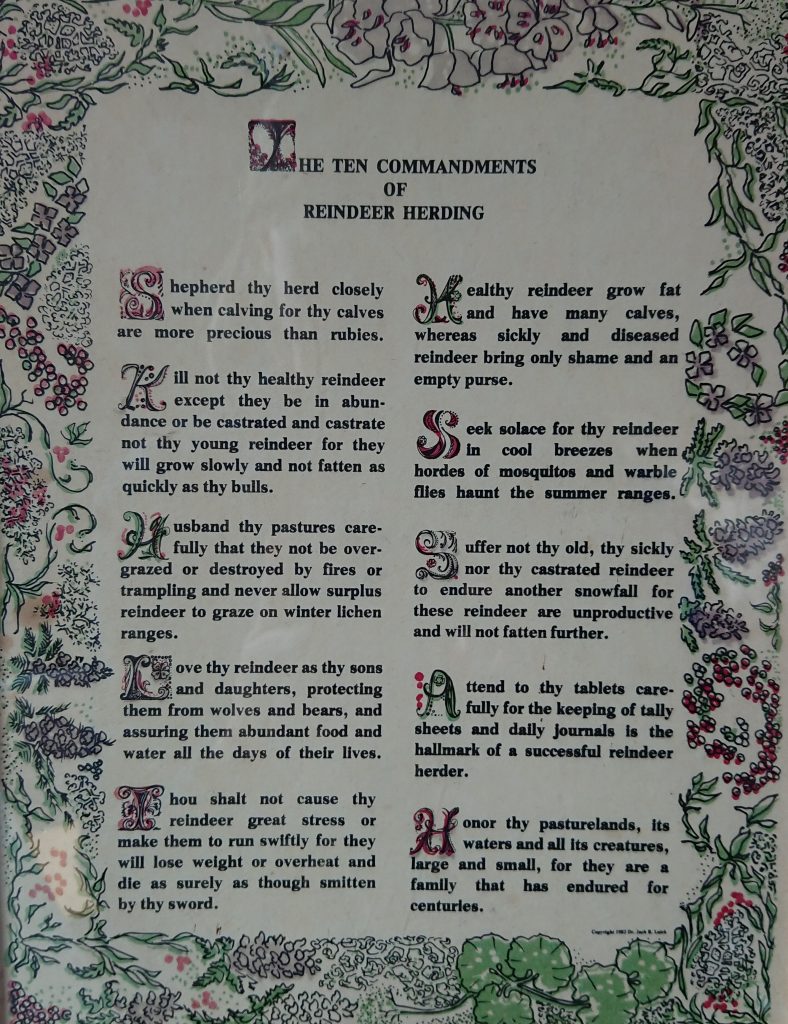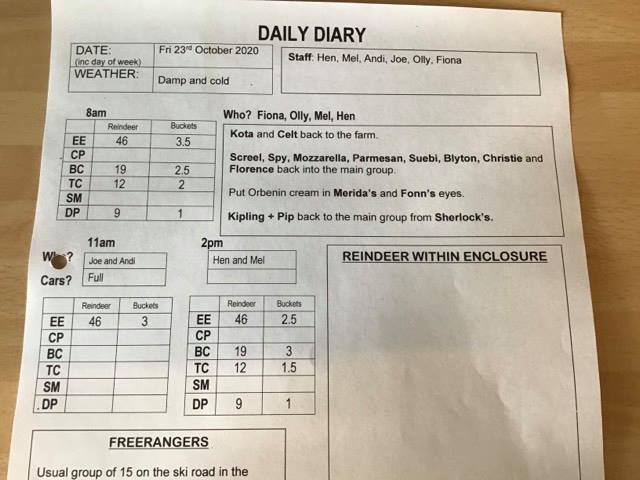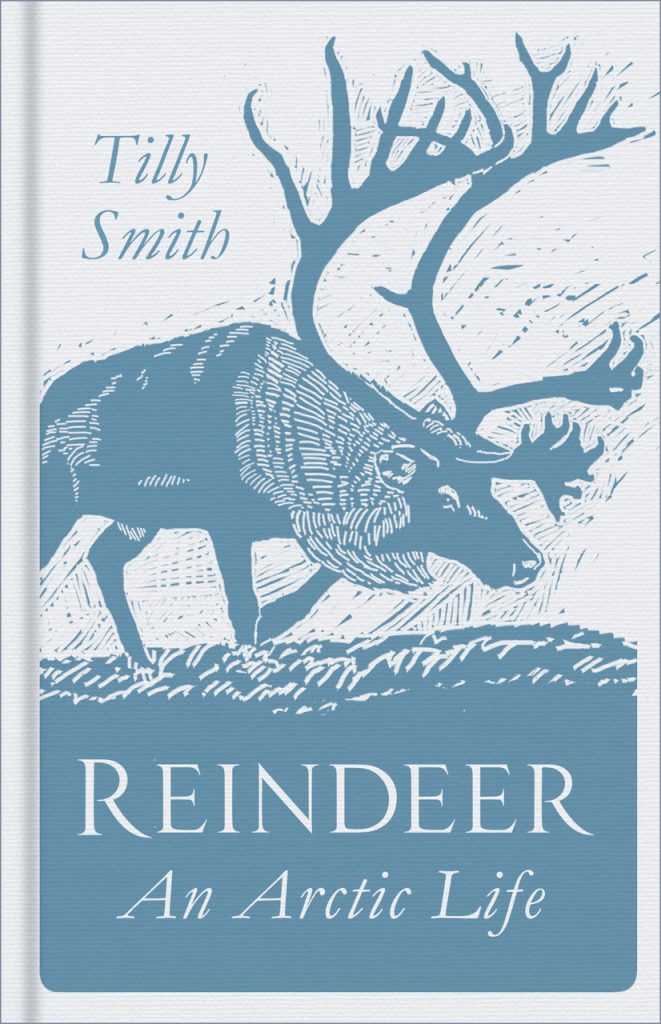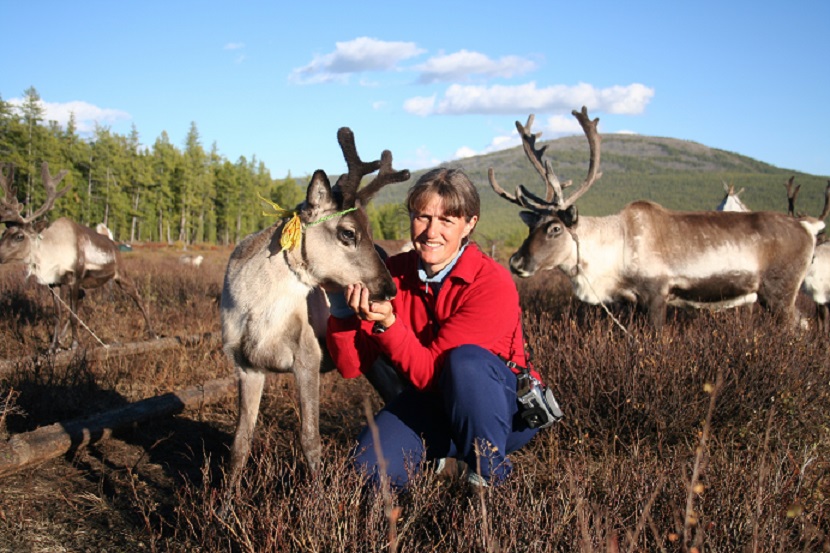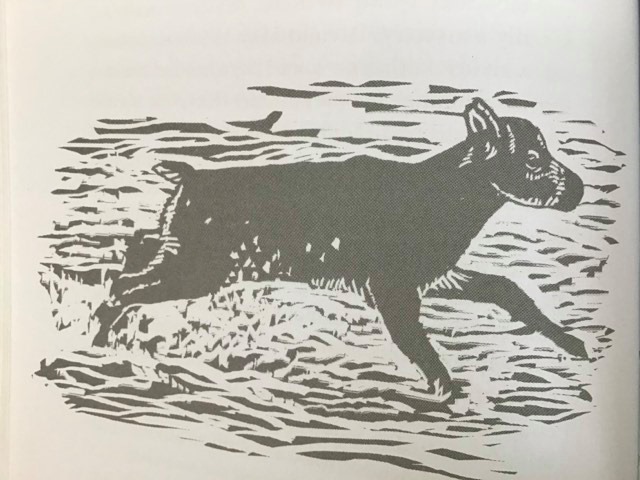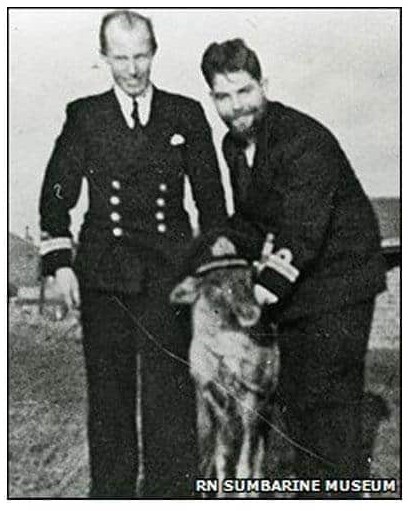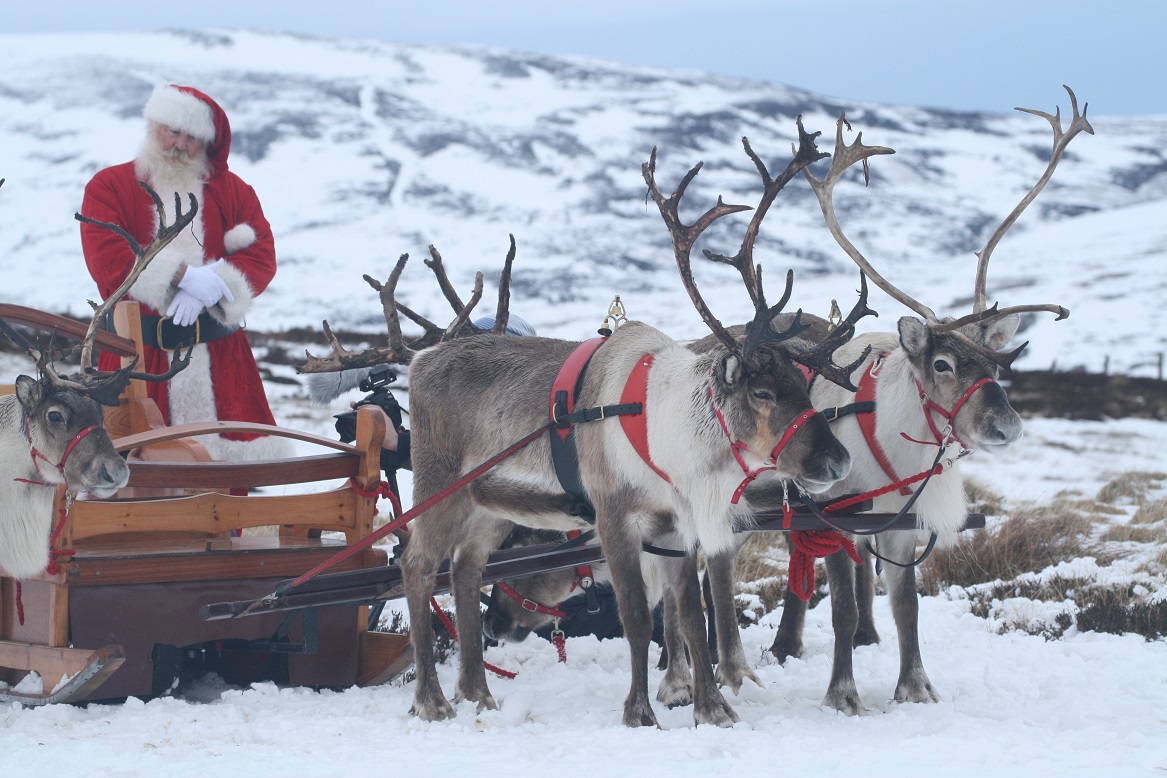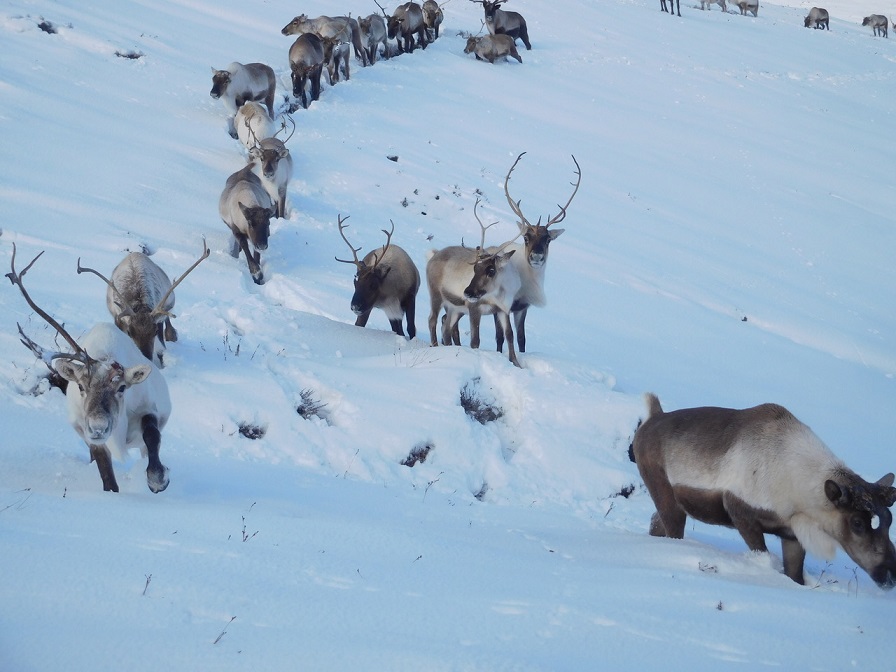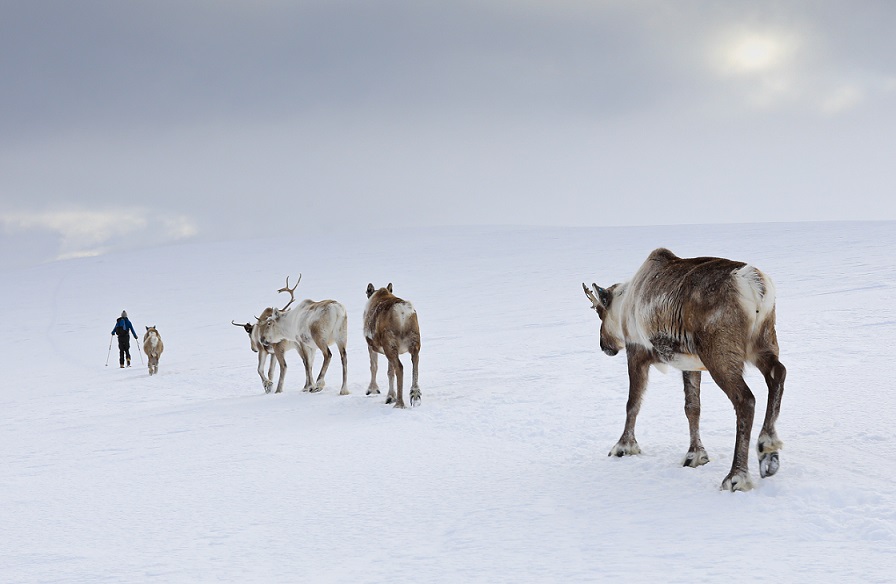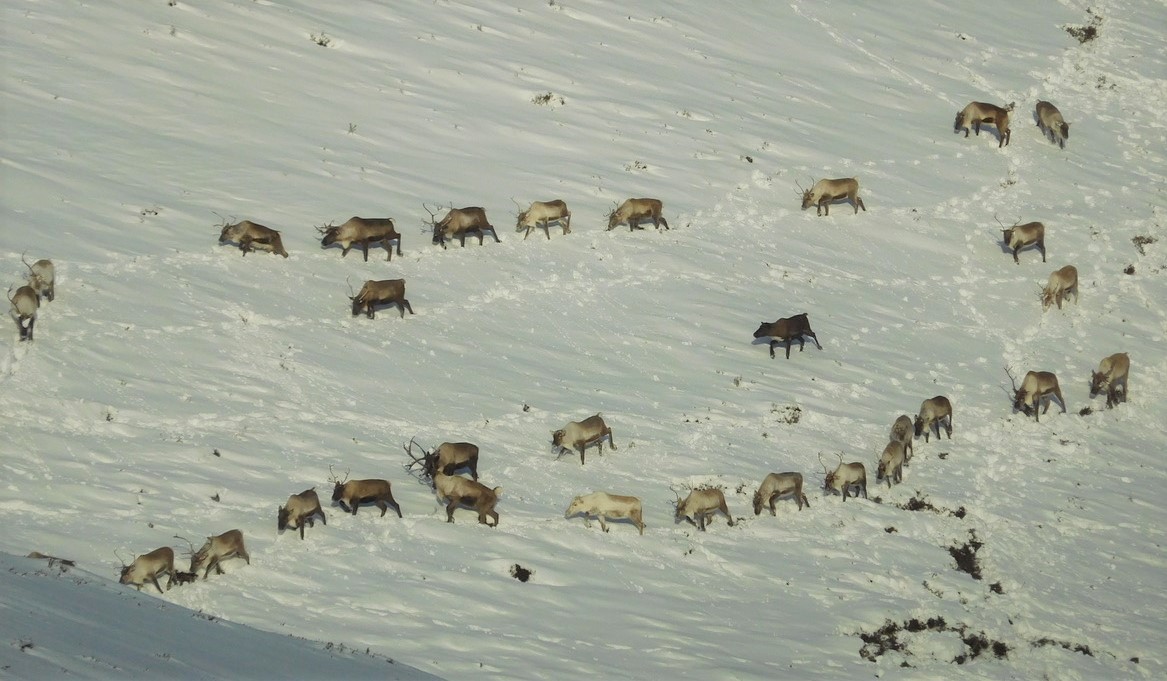A visitor recently asked me why reindeer have horizontal pupils. The question had me thinking about the importance of vision to reindeer. It is easy to forget that many animals don’t see the world the same way we do, and reindeer eyes are in many ways different from our own.
Reindeer live in arctic and sub arctic regions that experience hugely variable light levels. Above the arctic circle, they’ll experience 24 hour darkness in winter and 24 hour sun in summer, and no matter how dark it is, they still need to be able to find their food and see predators coming. So how do reindeer eyes cope with their environment?
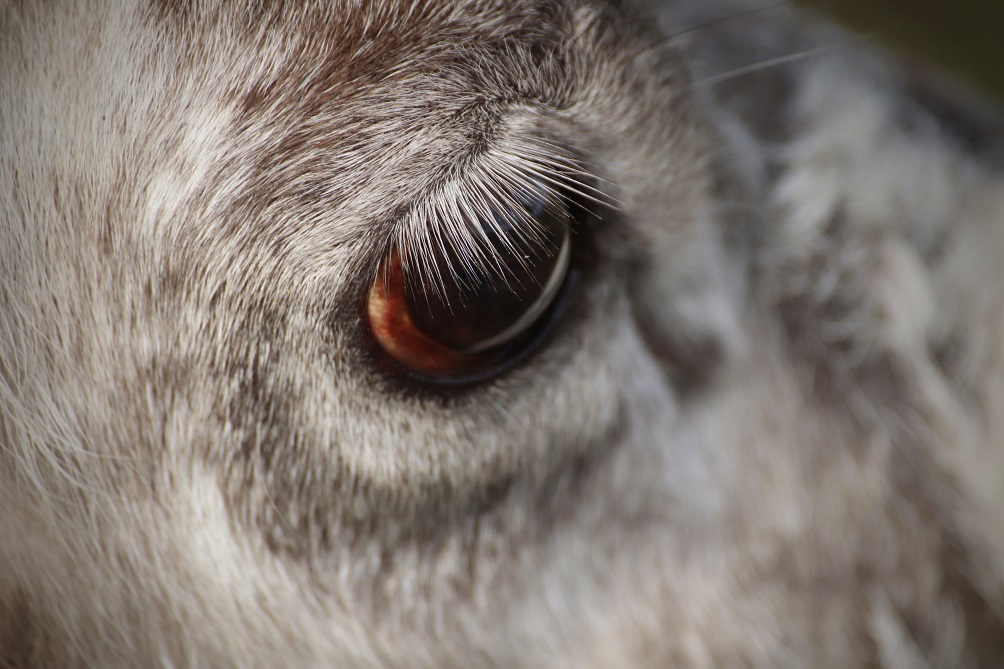
When you look at a reindeer, the most obvious thing about their eyes is that they are placed on the side of their heads. This is common in prey animals, and it gives them a wide field of vision that means they can see danger coming from almost any direction. The placement of their eyes does mean they have a blind spot right in front of their noses, but aside from this it’s very hard to sneak up on a reindeer!
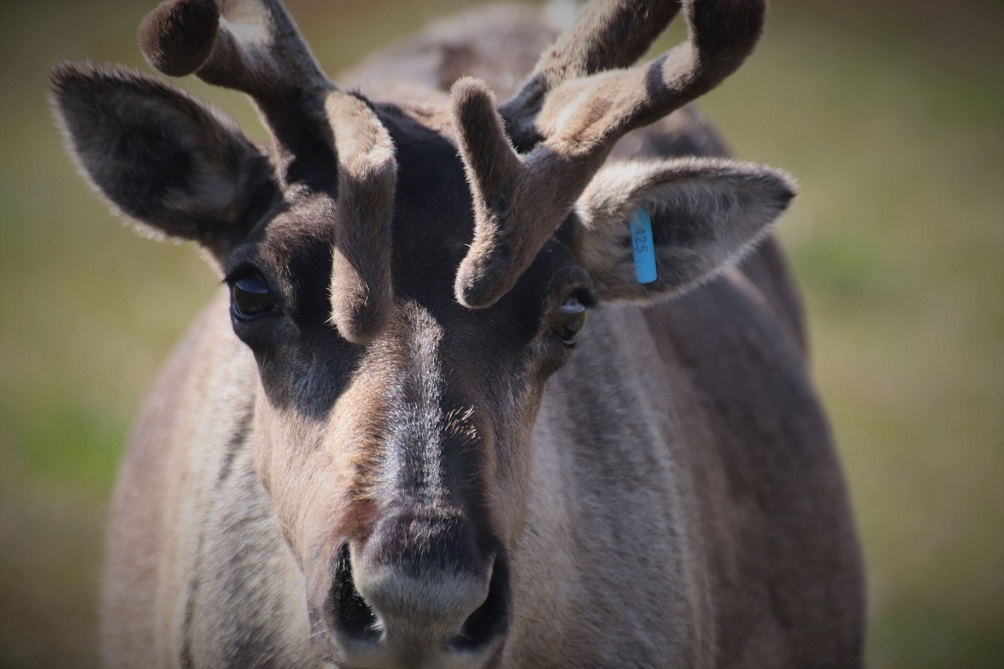
If you look a bit closer, the next thing you might notice – aside from their beautiful eyelashes – is that they have long, horizontal pupils. This adaption helps focus a reindeer’s sense of sight at the ground level and the horizon – where their food and their predator’s are found. These horizontal pupils also help compensate for the placement of their eyes and reduce the size of that blind spot in front of a reindeer, so that they can see forwards – vital for finding an escape route when on the run from a predator.
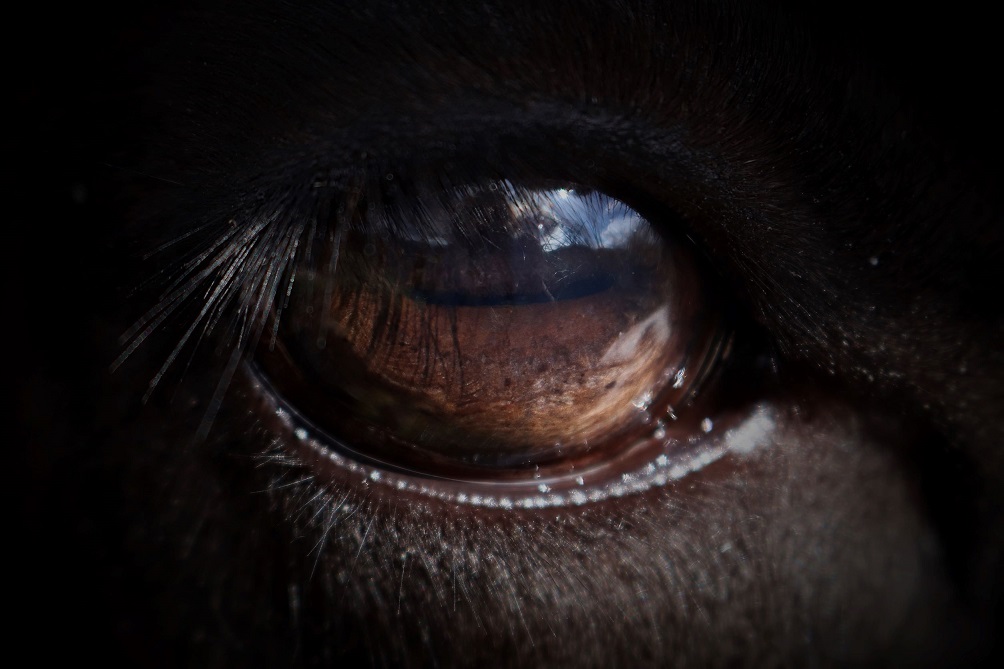
If you looked deeper into a reindeer’s eyes, you would find even more amazing adaptions. In 2013 scientists discovered that reindeer eyes actually change colour with the seasons! A layer of tissue in the retina changes from a golden colour in summer to a deep blue in winter. This change means that less light is reflected back out of the eye, helping reindeer keep their vision sharp even in the long dark winter months. This is the first time this kind of colour change in a mammalian eye has been found. It is thought the colour change might be caused by increased pressure in the eye in winter. The pupil is permanently dilated in the dark, and this reduces the space in the collagen structure of the retina, which in turn changes the reflectiveness of the retina and shortens the wavelengths of light being reflected.
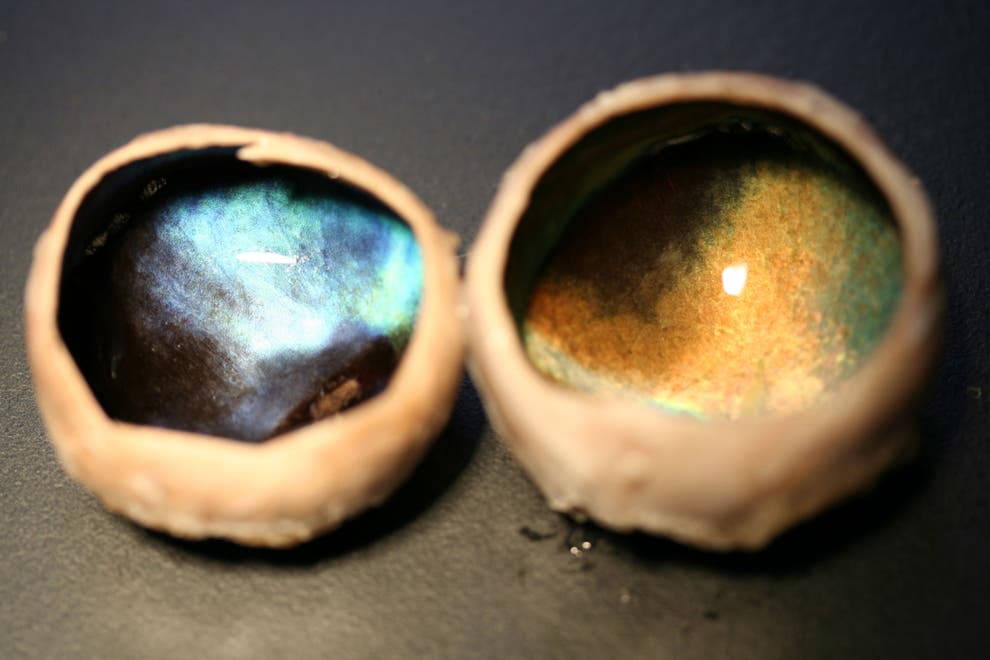
Reindeer vision is made even more interesting by the fact that they can see into the UV range. There are high levels of UV light present in the polar regions of the world due to the reflections from snow and ice. Many lichens – the favoured winter food of reindeer – are very effective at absorbing UV. Wolf fur as well is also shown to absorb UV, so being able to see UV wavelengths helps reindeer pick out both their food and their predators in the snow (see here for a previous blog on UV vision).
Reindeer seem to view the world quite differently to us, and it’s clear their eyes have had to adapt to many challenges. They’ve had to adapt to pick out predators and hard to find food, to cope with extreme seasonal changes in light, and to deal with the large amount of UV present in the arctic. Their eyes are just another example of how well adapted reindeer are for their environments.
Kate
Sources:
Why do animal eyes have pupils of different shapes? | Science Advances (sciencemag.org)

